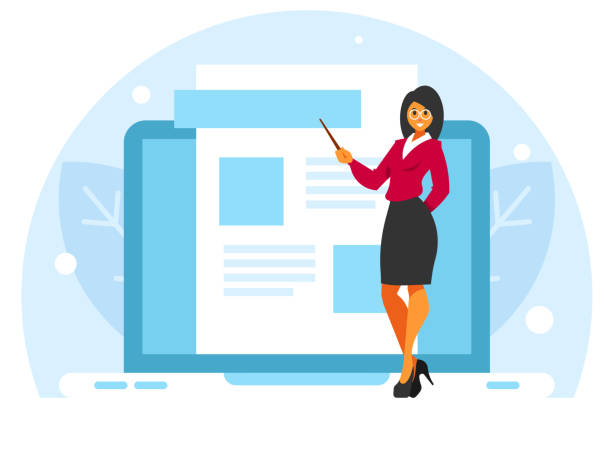Introduction and the Necessity of Secure Website Design
![]()
In today’s digital world, where we witness an unprecedented expansion of online activities every day, secure website design seems more vital than ever.
This is not just a recommendation but an undeniable necessity for the survival and credibility of any business or organization in the virtual space.
Websites, as the main gateways for interaction with audiences, are constantly exposed to various cyber threats.
From simple to complex and targeted attacks, website security can directly impact an organization’s reputation, data, and even financial interests.
Today, #website #security is no longer a luxury option, but a #main #pillar in the #digital #architecture of any platform. (Explanatory and educational content) The lack of secure website design can lead to the loss of sensitive user information, theft of financial data, brand reputation damage, and even severe legal penalties.
Therefore, investing in website security from the very initial stages of development is a smart and strategic move.
This article delves into various aspects of secure website design and provides practical solutions to enhance websites’ protection level.
Our goal is to create an educational platform for a better understanding of challenges and to offer effective solutions.
Are you tired of your e-commerce site having visitors but no sales? Rasaweb solves your main problem with professional e-commerce website design!
✅ Significant sales increase with targeted design
✅ Flawless user experience for your customers
⚡ Get a free consultation!
Common Website Security Threats

Knowing the enemy is the first step in any battle; in the field of secure website design, this rule is no exception.
Websites are constantly targeted by various types of cyberattacks, each with its own purpose and method.
Among the most common threats are SQL Injection attacks, where attackers gain access to sensitive information by injecting malicious code into the database.
XSS (Cross-Site Scripting) attacks can also steal user information or take control of their browsers by injecting malicious scripts into web pages.
DDoS (Distributed Denial of Service) attacks disable websites and prevent legitimate users from accessing them by sending a huge volume of traffic to the server.
(Specialized and analytical content) In addition, Brute Force attacks to guess passwords, software vulnerabilities in Content Management Systems (CMS) or plugins, and Phishing attacks to deceive users and steal their information are also serious threats.
Even server misconfiguration or the use of weak passwords can pave the way for attackers to infiltrate.
Awareness of these threats and understanding how they work is the main basis for implementing a secure web architecture that can protect your site against many of these dangers.
It is necessary for every individual responsible for web development to be familiar with these threats to ensure secure website design.
Reviewing and recognizing these risks is the first step towards increasing site security.
Basic Principles of Secure Website Design and Best Practices
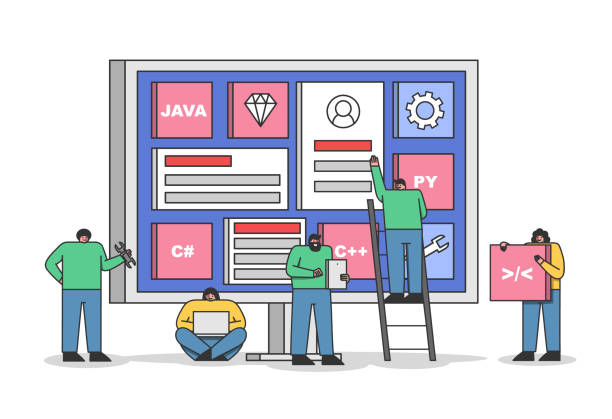
When it comes to secure website design, a set of best practices and principles must be considered and adhered to from the very beginning of the development process.
One of the most important of these principles is Input Validation.
Any data entered into the system by users through forms or URLs must be carefully checked and filtered to prevent the injection of malicious code.
Using standard security functions and frameworks instead of developing custom code from scratch can significantly increase the security level.
(Guidance and educational content) Also, it is crucial to always use the latest software versions for the server operating system, web server, database, and content management system.
Proper error management is also of high importance; displaying general error messages instead of detailed information that could provide clues to attackers is a crucial security practice.
Encrypting data in transit and at rest is also a key principle, especially for sensitive user information.
| Principle | Description | Importance |
|---|---|---|
| Input Validation | Controlling and sanitizing input data to prevent injection attacks. | Prevention of SQL Injection and XSS. |
| Data Encryption | Using SSL/TLS for data in transit and encrypting sensitive stored data. | Protecting user privacy and data security. |
| Proper Error Management | Displaying general error messages and logging detailed errors securely. | Preventing system information disclosure to attackers. |
| Regular Updates | Continuous maintenance and updating of all software and libraries. | Patching known vulnerabilities. |
Another important practice in secure website design is the implementation of strong authentication mechanisms, ranging from complex passwords to two-factor authentication (2FA).
Additionally, limiting access based on the Principle of Least Privilege, meaning that each user or service only has access to the minimum resources necessary to perform their task, reduces the risk of infiltration.
These approaches are an integral part of secure web development and can make a significant difference in a website’s resilience against attacks.
Finally, educating the development team and all individuals involved with the website about the importance of security and security practices is also very crucial.
The Role of SSL/TLS Certificates in Web Security
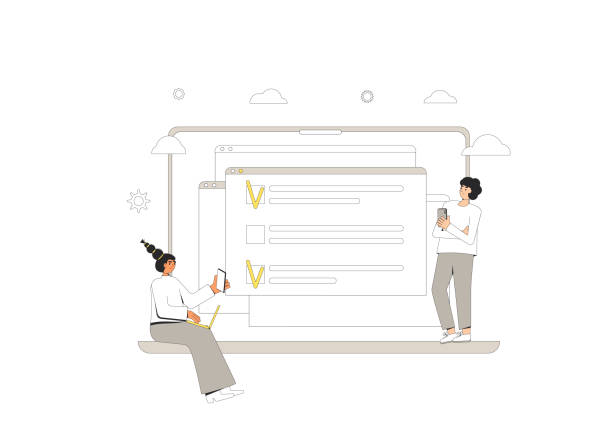
In the discussion of secure website design, SSL/TLS certificates are of particular importance.
These certificates are security protocols responsible for encrypting communications between the user’s browser and the website server.
When a website has a valid SSL/TLS certificate, all exchanged data, including login information, credit card numbers, and personal data, are transmitted encrypted, protecting against unauthorized access and eavesdropping.
(Explanatory and specialized content) This not only ensures data security but also significantly increases user trust, as they see the “green lock” and “https://” in their browser’s address bar.
Not using SSL/TLS can make your website vulnerable to Man-in-the-Middle attacks, where an attacker can intercept and manipulate exchanged data.
In addition to the security aspect, using SSL/TLS certificates is also an important factor in Search Engine Optimization (SEO), as Google and other search engines prefer HTTPS websites in their search results rankings.
The choice of certificate type (DV, OV, EV) depends on the needs and desired level of trust, but the fundamental principle is that every website, especially those processing sensitive information, must have an SSL/TLS certificate.
This is a vital step towards increasing site security and protecting users.
Is your company’s website as professional and trustworthy as it should be? With specialized corporate website design by Rasaweb, create an online presence that reflects your credibility and attracts more customers.
✅ Build a powerful and professional image for your brand
✅ Convert visitors into real customers
⚡ Get a free consultation now!
Protecting User Data and Privacy
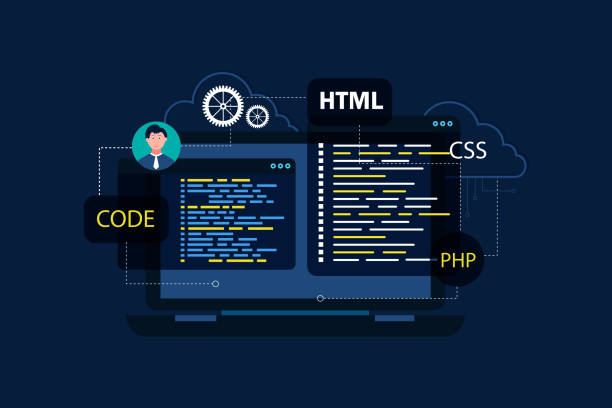
In the digital age, protecting user data and respecting their privacy is one of the most important pillars of secure website design.
Does your website fully protect users’ personal information? This is a question every developer and website owner must answer.
(Thought-provoking and specialized content) From collecting the minimum necessary information (Principle of Data Minimization) to implementing strong encryption for data at rest and in transit, all these steps are vital.
Databases that store sensitive user information must be protected with the highest security standards, and access to them must be strictly limited.
Encrypting passwords using strong hashing algorithms and adding Salt (a random string) to prevent Brute Force and Rainbow Table attacks is essential.
Furthermore, implementing mechanisms for deleting old and unnecessary information and adhering to global privacy regulations such as GDPR (General Data Protection Regulation of the European Union) and CCPA (California Consumer Privacy Act) play a significant role in secure web development.
Transparency regarding how data is collected, used, and stored through a clear and understandable privacy policy for users is not only a legal requirement but also builds their trust.
Any privacy breach can lead to severe reputational damage and heavy financial penalties.
Therefore, a significant part of secure website design focuses on comprehensive data protection procedures and adherence to privacy principles.
Updates and Continuous Security Maintenance

Secure website design is not a one-time process, but requires continuous and dynamic maintenance.
Cyber attackers are constantly discovering new vulnerabilities and developing more advanced attack methods.
Therefore, keeping all website components up-to-date, from the server operating system and web server to the Content Management System (CMS), plugins, themes, and code libraries, is crucial.
(Guidance and news content) Many successful attacks occur due to the use of outdated software with known vulnerabilities for which security patches have been released but not applied.
Development and maintenance teams must have a regular plan to review and apply these updates.
This includes security patches, major software updates, and framework updates.
Continuous monitoring of server logs and website activities to identify suspicious patterns and intrusion attempts is also an essential part of security maintenance.
In addition, regular backups of the database and website files should be made and stored in a secure and separate location to allow for quick recovery in case of serious attacks or data loss.
This preventive approach plays a pivotal role in increasing site security and ensures that your website remains resilient against new threats.
With these measures, we can ensure the security of our website in the long term.
Website Penetration Testing and Vulnerability Assessment

After implementing the principles of secure website design, the next crucial step is continuous assessment and Penetration Testing.
This process involves simulating real cyberattacks on your website by security specialists or automated tools to identify potential weaknesses and vulnerabilities.
(Specialized and analytical content) Penetration testing can be carried out in various ways; from Black Box testing, where the attacker has no information about the system (similar to an external hacker), to White Box testing, where all system information is provided to the testing team (similar to an internal intruder or a team with access to the code).
The primary goal of these tests is to find ways to bypass security controls and penetrate the system before a real attacker does.
The results of these tests help the development team fix existing vulnerabilities and increase the website’s security level.
Vulnerability scanners are also automated tools that can be regularly used to find known vulnerabilities in the code, server settings, and software being used.
Regularly performing these assessments is an integral part of a comprehensive website security strategy.
| Test Type | Description | Purpose |
|---|---|---|
| Penetration Testing | Simulating real attacks by specialists to discover vulnerabilities. | Finding exploitable weaknesses before hackers. |
| Vulnerability Scanning | Using automated tools to identify known vulnerabilities. | Quickly identifying common vulnerabilities and misconfigurations. |
| Code Review | Manual or automated review of source code to find security flaws. | Preventing the injection of vulnerabilities in the early stages of development. |
One of the fascinating aspects of penetration testing is the effort to “ethically hack” the system to identify weaknesses.
This process not only helps strengthen defenses but can also provide security teams and developers with new insights into how attackers think.
After each penetration test, a comprehensive report is provided, including discovered vulnerabilities, their severity, and corrective solutions.
These reports must be carefully reviewed, and all flaws should be tracked until fully resolved.
In fact, conducting periodic penetration tests and regular vulnerability assessments complement secure website design and help ensure the website’s resilience against increasing threats.
This is a practical guide for any organization looking to enhance its site security.
Dealing with Cyberattacks and Data Recovery

Even with the best secure website design and adherence to all principles, the probability of a cyberattack never reaches zero.
Therefore, having an Incident Response Plan to deal with attacks and data recovery is essential.
This plan should include specific steps for attack identification, containment, root cause analysis and system cleanup, and finally, recovery and return to normal operation.
(Guidance and news content) The first step after identifying an attack is to contain it to prevent the damage from spreading to other parts of the system.
This may include disconnecting infected systems or blocking suspicious traffic.
After containment, the security team must conduct a root cause analysis to identify the origin and method of the attacker’s intrusion and prevent its recurrence in the future.
Cleaning the system from any malware or changes made by the attacker is also a vital step.
Finally, the recovery phase involves restoring the system to its operational state before the attack using secure and valid backups.
Having regular and tested backups plays a very important role in the success of the recovery process.
These measures not only help reduce downtime but also minimize financial and reputational damages caused by attacks.
Collaborating with cybersecurity specialists during a crisis can accelerate the recovery process and ensure that all security aspects are considered.
This is a comprehensive approach to increasing site security that includes prevention and preparation for worst-case scenarios.
Did you know that 94% of users’ first impressions of a business are related to its website design? With professional corporate website design by **Rasaweb**, turn this initial impression into an opportunity for growth.
✅ Attract more customers and increase sales
✅ Build credibility and trust in the audience’s view⚡ Get a free website design consultation!
The Future of Secure Website Design and Artificial Intelligence
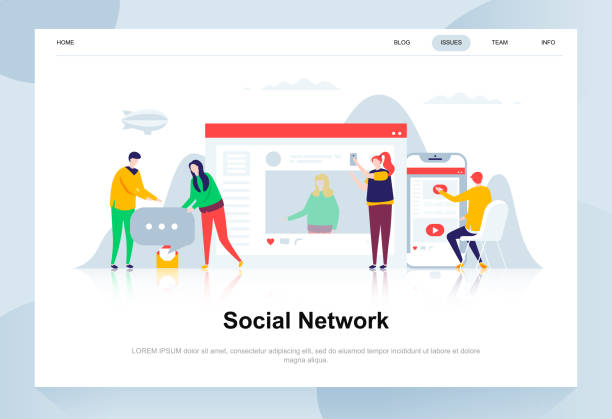
The future of secure website design is deeply intertwined with advancements in Artificial Intelligence (AI) and Machine Learning (ML).
These technologies hold immense potential to revolutionize current security approaches.
AI can analyze vast amounts of data, identify attack patterns, detect security anomalies, and even predict potential risks before an attack occurs.
(Engaging and analytical content) Imagine a system that can automatically monitor website traffic and, upon detecting suspicious behavior or intrusion attempts, take necessary defensive actions.
This could include blocking malicious IP addresses, applying new firewall rules, or even quarantining vulnerable parts of the website.
Machine Learning enables systems to learn from past experiences and update their defenses as threats evolve, without constant human intervention.
Of course, these technologies also have their own challenges, including the need for quality training data and the risk of Adversarial attacks that attempt to deceive AI models.
Nevertheless, the use of AI in Intrusion Detection Systems (IDS), Intrusion Prevention Systems (IPS), and Web Application Firewalls (WAF) is already expanding.
These developments indicate that website security will become smarter and more automated in the future, allowing security teams to focus on more comprehensive strategies instead of manually reacting to every threat.
This is a new horizon for secure web architecture.
Protecting APIs and Microservices

In modern web architectures, APIs (Application Programming Interfaces) and microservices play a pivotal role.
These components, which enable communication and data exchange between different parts of a system or with external systems, introduce new vulnerabilities in secure website design that require special attention.
(Specialized and explanatory content) API security is of high importance, as they often serve as gateways to sensitive data and critical system functionalities.
Common attacks on APIs include broken authentication, sensitive data exposure, and Injection attacks.
To ensure website security in this area, strong authentication mechanisms like OAuth 2.0 and JWT (JSON Web Tokens) should be used.
Also, Rate Limiting requests to prevent Brute Force and DDoS attacks on APIs is essential.
Precise validation of inputs and outputs at all API endpoints is crucial to prevent code injection and data exposure.
Microservices, each offering an independent service, must also be secured individually.
Communications between microservices should be encrypted and carried out using secure protocols.
Using API Gateways can act as an additional defense layer, centralizing security tasks such as authentication, authorization, and rate limiting.
Neglecting API and microservice security can render all efforts for a secure website design ineffective and open new entry points for attackers.
This is a critical aspect of increasing site security in modern architectures.
Frequently Asked Questions
| Row | Question | Answer |
|---|---|---|
| 1 | What is secure website design? | The process of designing and developing websites that are resilient against cyberattacks and protect user data and privacy. |
| 2 | Why is website security important? | To prevent data breaches, financial losses, damage to company reputation, and to maintain user trust. |
| 3 | What are some common website security threats? | SQL Injection, XSS (Cross-Site Scripting), CSRF (Cross-Site Request Forgery), weak authentication, and outdated software. |
| 4 | What are SSL/TLS and what is their role? | Protocols for encrypting data between the user’s browser and the website server, ensuring secure and private communication. |
| 5 | How can SQL Injection attacks be prevented? | By using Prepared Statements/Parameterized Queries, input validation, and ORMs (Object-Relational Mappers). |
| 6 | What is the role of a Web Application Firewall (WAF) in security? | A WAF monitors and filters HTTP traffic between a web application and the Internet to prevent malicious attacks. |
| 7 | Why are regular updates of software and libraries necessary? | Updates include patches for known security vulnerabilities that attackers can exploit. |
| 8 | How can XSS attacks be prevented? | By sanitizing and escaping all user inputs before displaying them on the web page and using Content Security Policy (CSP). |
| 9 | What does the Principle of Least Privilege mean? | It means that users and systems are granted only the minimum necessary permissions to perform their tasks, preventing unnecessary access to resources. |
| 10 | What is the importance of proper User Session Management? | To prevent user session hijacking and unauthorized access to user accounts through secure and expiring session tokens. |
And other services of Rasaweb Advertising Agency in the field of advertising
Smart Custom Software: Revolutionize site traffic increase with the help of intelligent data analysis.
Smart Customer Journey Map: An effective tool for improving SEO ranking with the help of SEO-driven content strategy.
Smart Advertising Campaign: Transform user engagement with the help of dedicated programming.
Intelligent Data Analysis: A creative platform for improving campaign management using real data.
Smart Custom Software: A fast and efficient solution for user engagement focusing on marketing automation.
And over hundreds of other services in the field of internet advertising, advertising consulting, and organizational solutions
Internet Advertising | Advertising Strategy | Advertorial
Sources
10 Key Principles in Website Security
Comprehensive Guide to Secure Web Development
Latest Cybersecurity Trends for Developers
Importance and Implementation of HTTPS on Websites
? For a big leap in the digital world and reaching the peak of success, Rasaweb Afarin Digital Marketing Agency smooths the path of your business growth by providing comprehensive services including multilingual website design, professional SEO, social media management, and targeted advertising campaigns.
📍 Tehran, Mirdamad Street, next to Bank Markazi, Kazeroon Jonubi Alley, Ramin Alley, No. 6



